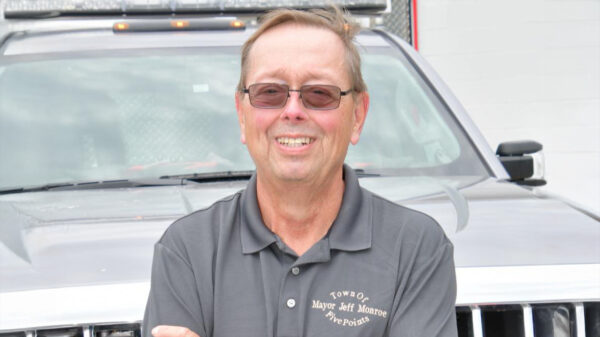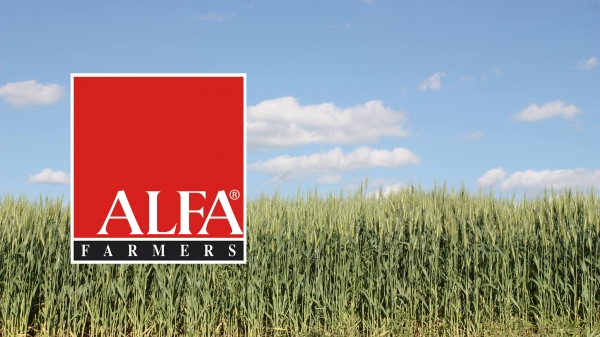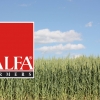By Brandon Moseley
Alabama Political Reporter
Monday, March 12, 2018, Brandon Bobo with the National Wild Turkey Federation addressed the St. Clair County Farmer’s Federation about improving turkey and quail habitat in the state of Alabama.
“I have been with the NWTF for five years,” Bobo said. “The first two years in Mississippi and the last three in Alabama.” I am from Oxford and went to Auburn University where I earned a bachelors in Wildlife Sciences.
“The NWTF was founded in 1973 by Tom Rogers,” Bobo said. “\The nation’s wild turkey were down to about 1.3 million. Today the population is about 7 million today. In the early days, the NWTF trapped wild turkeys where there was an abundance and relocated them to place with good habitat but no turkeys. “A lot of turkeys across the Southeast came from Alabama. We provided a lot of source turkeys in those days.”
The NWTP is pro-firearm, pro-Second Amendment, and support our hunting heritage, Bobo said. “Hunters fund 90 percent of the conservation.” The Wildlife Restoration act (the Pittman-Robinson Act) imposed an 11 percent excise tax on ammunition and anything hunting related. That money goes to Washington in a pool of money. States access that pool through match dollars. The primary source of those state dollars come from hunting licences. The best things you can do to support wildlife is to buy a hunting licnese, even if you won’t use it. “If they don’t have enough we (the NWTF) put in more money for the match $125,000 turns in to $500,000. The NWTF superfund was developed in the mid 1980s tio assist states with conservations research and other wild turkey projects.
To support the NWTF you can purchase turkey car license plates, Bobo said. “Alabama spent over $383,000 in 2016 alone from state Super Fund projects and license plate funds.”
“The NWTF is promoting archery in schools,” Bobo said. “We fund the state tournament every year.” The NWTF also has scholarships. “We presented a check of $13,000 to Auburn student Rachel Hollingsworth.” Most of the scholarships are $500 to a $1000.
Bobo warned that 2,000,000 acres of upland habitat is lost each year. Not all of that is redevelopment. “Timber mismanagement is just as bad as putting it in a parking lot.” What we are looking at is brood rearing habitat. We want to create habitat to produce poults (newly hatched turkeys). We are seeing substantial tureky delines in both North Alabama and southeast Alabama.
“Colonel Tom Kelly has written a number of good books on turkey hunting,” Bobo said. The first year after a timber clear cut annual plants provide a good forage for turkeys and deer In the second and third year prennial plants and grasses provide good forage. In the third and fourth years shrubs start to shade out the grasses and annuals. As the pine trees grow they shade out the understory plants that provide most of the forage for turkeys and quail. Early succcessional vegation can provide 10 to 25 times more forage for wildlife tha mature climax forests. Large hardwoods produce soft and hard mast which is great but is only available for a limited time of year. Supplemental food sources such as clover plots constitute a small percentage of habitat compared to forest It is more benefitcal to manage forests for wildlife.
Turkeys are generalists and can prosper even on small acreages. Some species needs a greater area of habitat than others. Bobwhite qual for example need 5,000 acres of habitat to maintain their numbers over time versus cottontail rabbits which can thrive on very small acreages. You can have hundreds of rabbits on ten acres.
Bobo said that decades ago Alabama was excellent quail habitat because so much of the state was in crops and the farmers managed those fields with fire. Today you can’t hardly find quail on public land anymore. Only on private land that is being managed for quail can you find healthy populations anymore.
Quail and turkey poults benefit from fire because it opens up the understory of the forest to sunlight and increases those annuals and perennial grasses that provide most of the forage for the young, newly hatched birds to eat and survive, Bobo explainted.
Originally Alabama was forested but the primary species for those forests were longleaf and shortleaf pine. There was nobody to put out forest fires back when the Indians were here so fire would burn through those forests every three or four years. Longleaf and shortleaf pines are very tolerant of fire. In the 1940s there was a shortage of lumber for building materials so they planted land back into forests. Their focus was on fast wood production so they planted loblolly pines. Now we have this mass forest of loblolly pine but it is not adapted to fire. Fire will kill it when it is young. Loblolly grew originally in low lying areas that seldom ever burned because of the moisture. Longleaf also has a sparse crown so it allows more sunlight to reach the ground than loblolly does.
“We are trying to put fire back in those ecosystems,” Bobo said. “We want sunlight hitting the ground. Bobwhite quail need fire for habitat. Turkeys are generalists but they do better with fire in the system.”
“Without fire after five years they have no habitat,” Bobo said. “There is a lot of research that you can sustain populations of quail in forestry with regular controlled burns. Bobo recommended using natural barriers such as SMZs (streamside management zones trails) or roadsways, and right of ways to control prescribed burns. Best managemetn practice suggest maintain a 35 foot buffer on each side of a stream from timber harvesting or crop planting but utilizing a wider 75 to 100 foot zone is even better.
Bobo said that he is available for free consulting on how you can manage your property for wildlife habitat and can write up a management plan for the property to promote wildlife. If you tell me that the goal of a timber stand is to pay for the children or grandchildren’s college; then I will be honest with you. “Loblolly is the best return on investment. If wildlife is your emphasis we have gotten a lot of other options.” Cost assistance is available for restoring wildlife habitat.
Bobo said that many people plant food plots for wildlife. Bobo said not to plant rye grass. It is commonly used in most commercial plots and it looks wonderful; but that is because nothing eats it. The cereal grains (rye, whealt, oats) are good for birds. All of the clovers are good, Many people plant chufa. Wildlife loves it; but if you have hogs do not plant chufa because hogs will decimate it. if you can keep hogs out of it and it is big enough that turkeys won’t eat it all up you can disk it down and it will even return year after year.
The Alabama Political Reporter asked, in Walker, Marian, and Winston Counties you see a lot of fields planted in a mix of sericea lespedeza and fescue. I think a lot of that land used to be strip mines; but that persists really well. It can become rank though. How is that for wildlife?
Sericea is very good; but fesuce is not, Bob said. I wish I could just make it go away. I know cattlemen in the back of the room disagee. Whitetail deer are a browsing species. Fescue, ryegrass, bermudagrass bahia are all great for cattle because they are constantly grazing it. Some people have fields that they don’t use any more that they are maintaining by mowing. Let it go back to native grasses. That would be better for wildlife.
St. Clair County Farmer’s Federation Roland St. John said that Bynum Stockyard in Attalla has a new owner. Their first event was in February. 656 horses from states across the nation were at their first sale. Prices were good. A couple of horses brought over $10,000 and a zebra brought $6500. Some people don’t horse auction but there needs to be an outlet for old or injured horses, rather than just dragging them to the back of the pasture. The new owners have spent over $100,000 on fixing the facility. This will be good for the horse industry in Alabama.
There were 51 students at the inaugural year of beekeeping school in Ashville. The classes will probably are going to expand by a couple of weeks when it starts again this fall.
Rusty Jessup announced to the group that he is running for the state legislature as a Republican in House District 30. Jessup is the Mayor of Riverside.
St. Clair County Commissioner Tommy Bowers (R) reported about his trip to went to the National Association of Counties (NACo) meeting.

















































